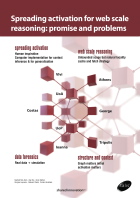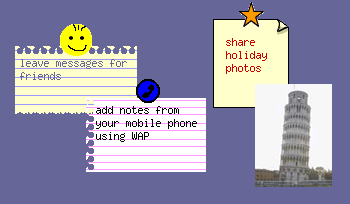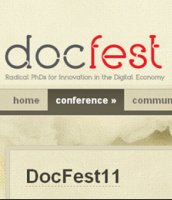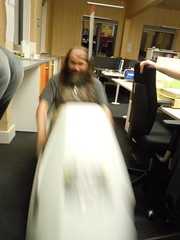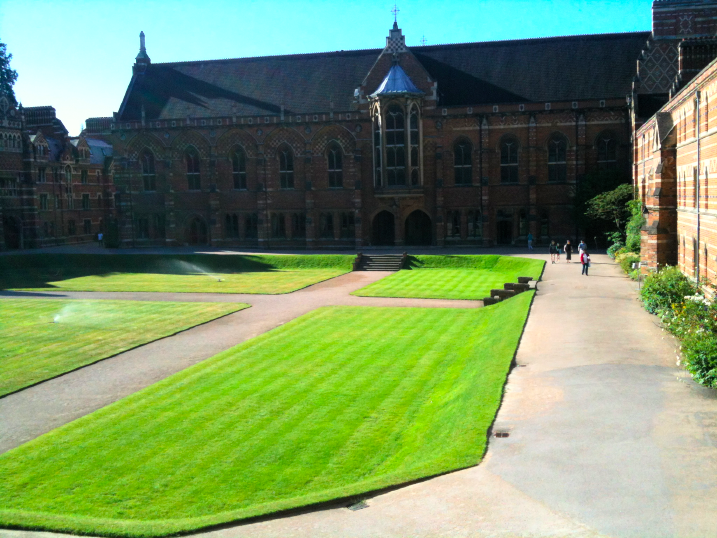 Sunshine on Keble quad, brings back memories of undergraduate days at Trinity, looking out toward the Wren Library.
Sunshine on Keble quad, brings back memories of undergraduate days at Trinity, looking out toward the Wren Library.
Yesterday was first day of WebSci 2015. I’m here largely as I’m giving my work on comparing REF outcomes with citation measures, “Citations and Sub-Area Bias in the UK Research Assessment Process”, at the workshop on “Quantifying and Analysing Scholarly Communication on the Web” on Tuesday.
However, yesterday I was also on a panel on “Web Science & the Internet of Things”.
These are some of the points I made in my initial positioning remarks. I talked partly about a few things sorting round the edge of Internet of Things (IoT) and then some concerts examples of IoT related rings I;ve been involved with personally and use these to mention few themes that emerge.
Not quite IoT
Talis
Many at WebSci will remember Talis from its SemWeb work. The SemWeb side of the business has now closed, but the education side, particularly Reading List software with relationships between who read what and how they are related definitely still clear WebSci. However, the URIs (still RDF) of reading items are often books, items in libraries each marked with bar codes.
Years ago I wrote about barcodes as one of the earliest and most pervasive CSCW technologies (“CSCW — a framework“), the same could be said for IoT. It is interesting to look at the continuities and discontinuities between current IoT and these older computer-connected things.
The Walk
In 2013 I walked all around Wales, over 1000 miles. I would *love* to talk about the IoT aspects of this, especially as I was wired up with biosensors the whole way. I would love to do this, but can’t , because the idea of the Internet in West Wales and many rural areas is a bad joke. I could not even Tweet. When we talk about the IoT currently, and indeed anything with ‘Web’ or ‘Internet’ in its name, we have just excluded a substantial part of the UK population, let alone the world.
REF
Last year I was on the UK REF Computer Science and Informatics Sub-Panel. This is part of the UK process for assessing university research. According to the results it appears that web research in the UK is pretty poor. In the case of the computing sub-panel, the final result was the outcome of a mixed human and automated process, certainly interesting HCI case study of socio-technical systems and not far from WeSci concerns.
This has very real effects on departmental funding and on hiring and investment decisions within universities. From the first printed cheque, computer systems have affected the real world, while there are differences in granularity and scale, some aspects of IoT are not new.
Later in the conference I will talk about citation-based analysis of the results, so you can see if web science really is weak science 😉
Clearly IoT
Three concrete IoT things I’ve been involved with:
Firefly
 While at Lancaster Jo Finney and I developed tiny intelligent lights. After more than ten years these are coming into commercial production.
While at Lancaster Jo Finney and I developed tiny intelligent lights. After more than ten years these are coming into commercial production.
Imagine a Christmas tree, and put a computer behind each and every light – that is Firefly. Each light becomes a single-pixel network computer, which seems like technological overkill, but because the digital technology is commoditised, suddenly the physical structures of wires and switches is simplified – saving money and time and allowing flexible and integrated lighting.
Even early prototypes had thousands of computers in a few square metres. Crucially too the higher level networking is all IP. This is solid IoT territory. However, like a lot of smart-dust, and sensing technology based around homogeneous devices and still, despite computational autonomy, largely centrally controlled.
While it may be another 10 years before it makes the transition from large-scale display lighting to domestic scale; we always imagined domestic scenarios. Picture the road, each house with a Christmas tree in its window, all Firefly and all connected to the internet, light patterns more form house to hose in waves, coordinate twinkling from window to window glistening in the snow. Even in tis technology issues of social interaction and trust begin to emerge.
FitBit
My wife has a FitBit. Clearly both and IoT technology and WebSci phenomena with millions of people connecting their devices into FitBit’s data sharing and social connection platform.
The week before WebSci we were on holiday, and we were struggling to get her iPad’s mobile data working. The Vodafone website is designed around phones, and still (how many iPads!) misses crucial information essential for data-only devices.
The FitBit’s alarm had been set for an early hour to wake us ready to catch the ferry. However, while the FitBit app on the iPad and the FitBit talk to one another via Bluetooth, the app will not control the alarm unless it is Internet connected. For the first few mornings of our holiday at 6am each morning …
Like my experience on the Wales walk the software assumes constant access to the web and fails when this is not present.
Tiree Tech Wave
I run a twice a year making, talking and thinking event, Tiree Tech Wave, on the Isle of Tiree. A wide range of things happen, but some are connected with the island itself and a number of island/rural based projects have emerged.
One of these projects, OnSupply looked at awareness of renewable power as the island has a community wind turbine, Tilly, and the emergence of SmartGrid technology. A large proportion of the houses on the island are not on modern SmartGrid technology, but do have storage heating controlled remotely, for power demand balancing. However, this is controlled using radio signals, and switched as large areas. So at 4am each morning all the storage heating goes on and there is a peak. When, as happens occasionally, there are problems with the cable between the island and the mainland, the Island’s backup generator has to deal with this surge, it cannot be controlled locally. Again issuss of connectivity deeply embedded in the system design.
We also have a small but growing infrastructure of displays and sensing.
 We have, I believe, the worlds first internet-enabled shop open sign. When the café is open, the sign is on, this is broadcast to a web service, which can then be displayed in various ways. It is very important in a rural area to know what is open, as you might have to drive many miles to get to a café or shop.
We have, I believe, the worlds first internet-enabled shop open sign. When the café is open, the sign is on, this is broadcast to a web service, which can then be displayed in various ways. It is very important in a rural area to know what is open, as you might have to drive many miles to get to a café or shop.
We also use various data feeds from the ferry company, weather station, etc., to feed into public and web displays (e.g. TireeDashboard). That is we have heterogeneous networks of devices and displays communicating through web apis and services – good Iot and WebSCi!
This is part of a broader vision of Open Data Islands and Communities, exploring how open data can be of value to small communities. On their own open environments tend to be most easily used by the knowledgeable, wealthy and powerful, reinforcing rather than challenging existing power structures. We have to work explicitly to create structures and methods that make both IoT and the potential of the web truly of benefit to all.

